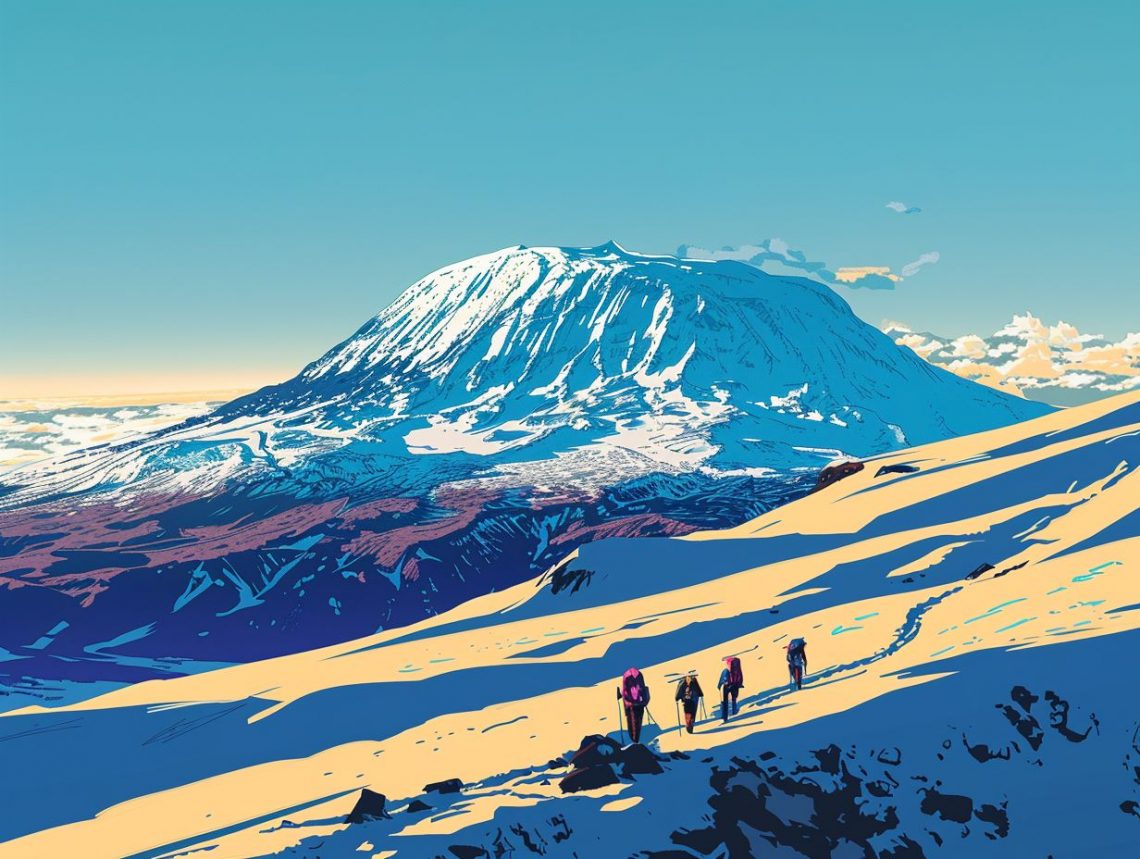
Best Time To Climb Kilimanjaro
Are you planning to climb Mount Kilimanjaro but unsure of when to go?
We will explore the best times to conquer Africa’s highest peak. From the peak season with ideal climbing conditions to the shoulder and low seasons offering unique experiences, we will discuss the factors you should consider before booking your trip.
Whether you prioritize weather, crowds, cost, or personal fitness, we have tips to help you make the most of your Kilimanjaro adventure. Let’s find out the perfect time for your Kilimanjaro climb!
Key Takeaways:
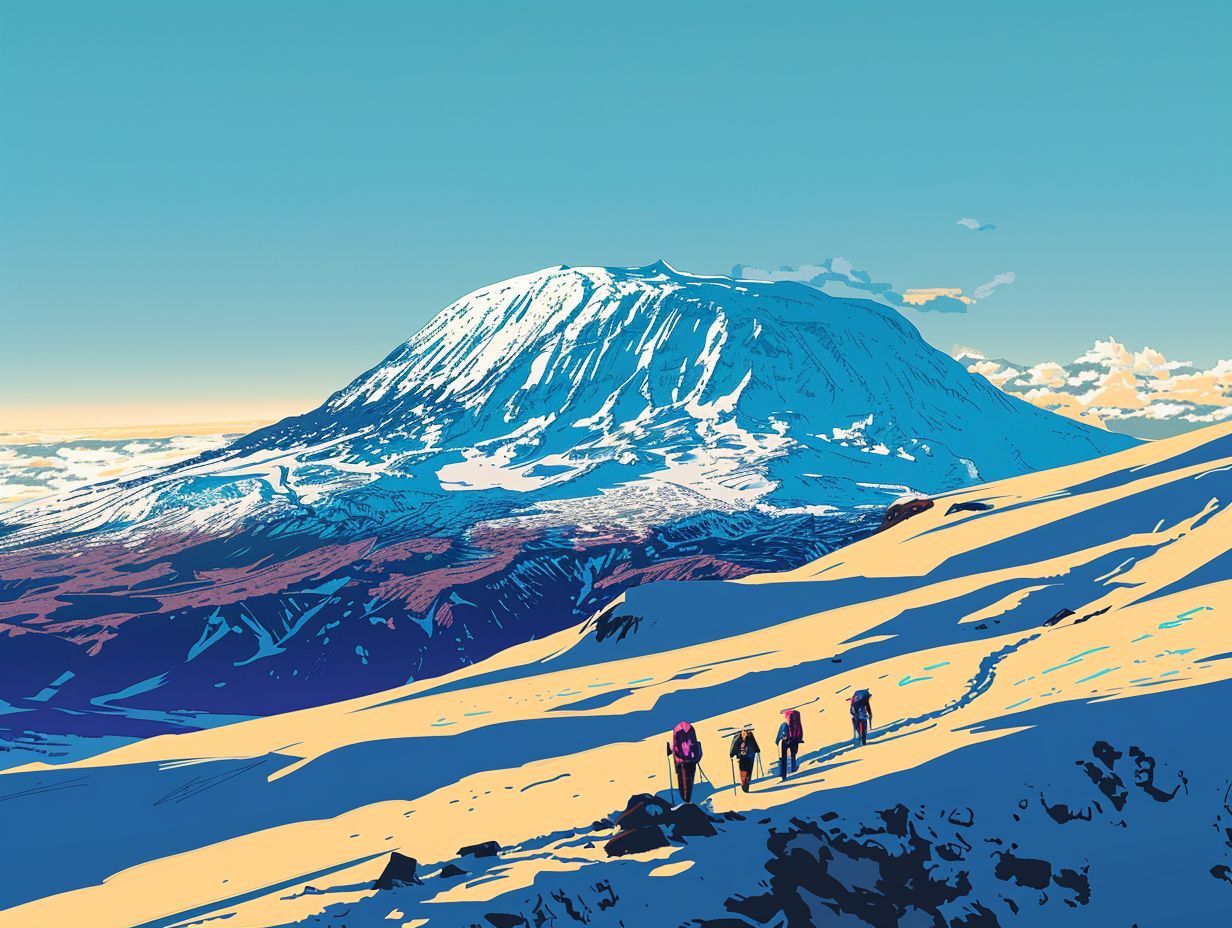
- The best time to climb Kilimanjaro is during the peak season (January-March, June-October) for the best weather and climbing conditions.
- The shoulder season (April, November-December) offers less crowds and lower costs, but the weather may be less ideal. Personal preferences and fitness level should also be considered when choosing a time to climb.
- No matter what season you choose, be prepared with the right gear and training to make the most out of your Kilimanjaro climb.
What is the Best Time to Climb Kilimanjaro?
Deciding on the best time to climb Kilimanjaro is crucial for a successful ascent, considering the varying weather conditions and climbing seasons throughout the year.
1. Peak Season (January – March, June – October)
The peak season for climbing Kilimanjaro, spanning from January to March and June to October, offers optimal weather conditions, clear visibility, and higher summit success rates.
During this time, climbers are greeted by generally stable weather patterns characterized by mild temperatures and minimal precipitation, making the ascent more manageable and enjoyable.
The clear visibility allows adventurers to soak in the breathtaking panoramic views of the surrounding landscapes, including the iconic African savannah and distant mountain ranges.
The occurrence of full moon nights during these months adds a magical touch to the journey, illuminating the path and creating a surreal atmosphere.
The moonlit nights not only enhance the overall experience but also contribute to better navigation and safety during night treks.
2. Shoulder Season (April, November – December)
The shoulder season for Kilimanjaro climbing, encompassing April and November to December, offers a balance between weather conditions, fewer crowds, and decent visibility on the trails.
During this period, climbers can expect cooler temperatures, especially at higher altitudes, which can enhance their overall experience while minimizing the risk of extreme heat.
The routes, such as the Machame and Lemosho routes, are usually less congested compared to the peak seasons, allowing trekkers to enjoy a more tranquil journey.
The chances of encountering clear skies and unobstructed views of the surrounding plains and glaciers are higher during the shoulder season, adding a touch of magic to the climb.
The reduced number of climbers on the mountain contributes to a more intimate and personal connection with the serenity of the natural surroundings.
3. Low Season (May)
The low season for Kilimanjaro climbing, specifically in May, is characterized by increased rainfall, lush rainforest landscapes, and fewer climbers on the trails, impacting safety and visibility.
While the higher chance of rainfall in May may pose a challenge in terms of slippery paths and wet gear, it also adds a mystical charm to the journey with blooming flora and cascading waterfalls.
Safety considerations become paramount as the rain brings about potential hazards such as mudslides and falling rocks, requiring trekkers to be extra vigilant.
The silver lining of fewer crowds during this period allows for a more serene and intimate experience, providing opportunities for deeper connections with nature and the local surroundings.
Factors to Consider When Choosing the Best Time to Climb Kilimanjaro
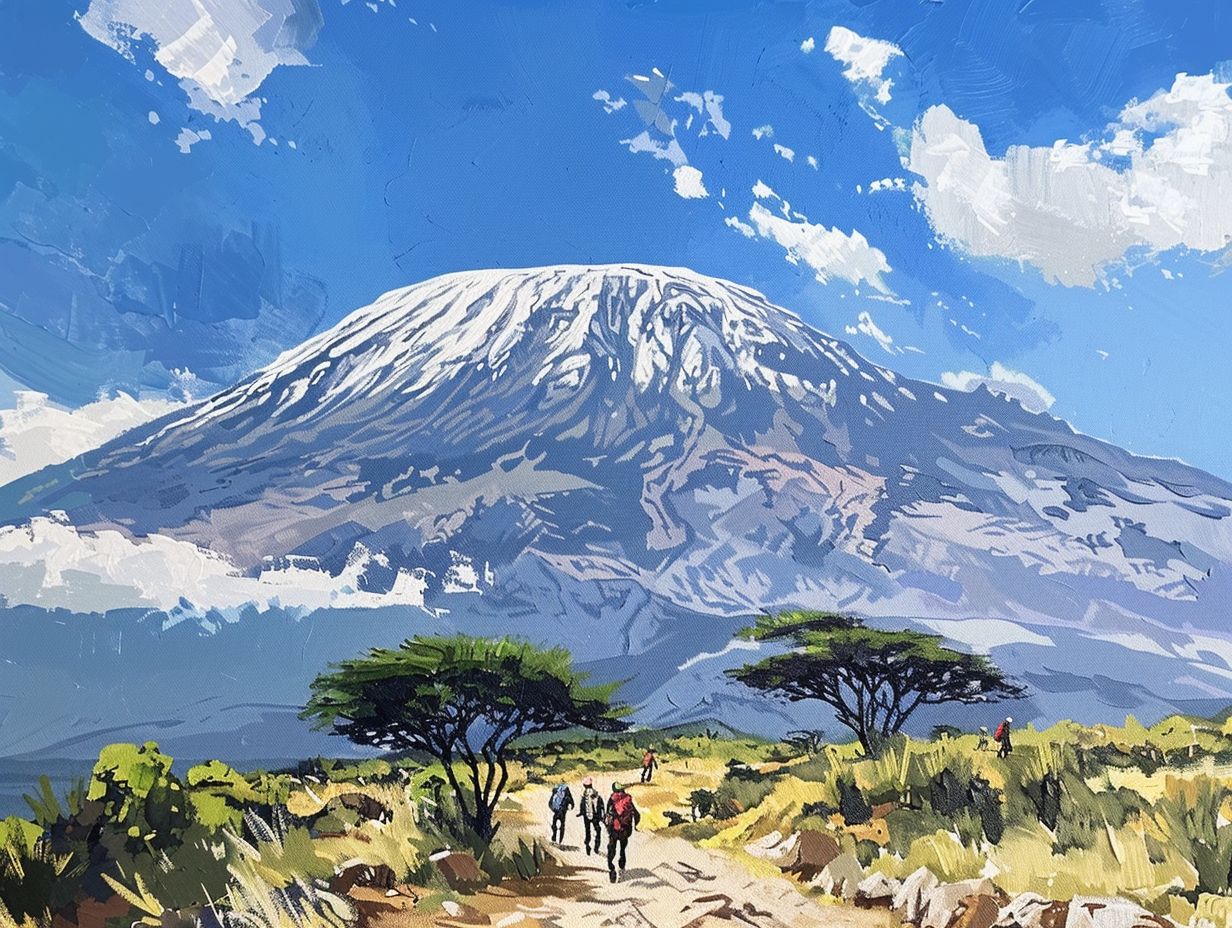
When deciding on the best time to climb Kilimanjaro, several factors need consideration, including weather patterns, seasonal variations, visibility on the trails, safety concerns, temperature fluctuations, and overall climbing conditions.
1. Weather and Climbing Conditions
Weather and climbing conditions play a critical role in determining the success of a Kilimanjaro ascent, with visibility, temperatures, and route choices significantly impacting climbers’ experiences.
When planning a Kilimanjaro climb, it’s essential for adventurers to carefully consider the weather conditions they might encounter.
Visibility can determine the safety and navigation of climbers on the mountain, especially during crucial sections of the ascent.
Drastic temperature fluctuations present challenges for climbers’ comfort and physical well-being. Proper gear selection and layering are key in combating these temperature changes.
The route selections made by climbers can have a notable impact on their summit attempts, with different paths offering varied levels of difficulty and terrain challenges.
2. Crowds and Availability
Crowds and availability of group climbs can significantly impact the climbing experience on Kilimanjaro, with considerations such as peak times, scheduled dates, and potential dry dust.
When deciding on the best time to climb, it’s essential to keep in mind that certain months are more popular than others, like July and August tend to be the busiest months.
If you prefer a quieter experience with fewer fellow climbers, you might want to consider planning your ascent during the off-peak season, such as January or February.
Being part of a group climb also plays a role in the overall experience. Scheduled dates often dictate the crowd levels, as group climbs tend to attract a higher number of participants.
The impact of dry dust on trail conditions cannot be overlooked. During certain times of the year, the trail may become dusty and slippery due to the lack of moisture.
Proper equipment and precautions are essential to navigate these conditions safely, ensuring a successful climb despite the challenges presented by the dry dust.
3. Cost and Budget
Cost and budget considerations are essential when planning a Kilimanjaro climb, as they can affect the overall experience, success rate, and quality of services provided during the expedition.
When climbers decide how much they are willing to spend on the climb, it directly impacts the choices they make, from selecting the route and duration to choosing between basic and luxury packages.
Opting for budget services might result in overcrowded trails and shared facilities, impacting comfort levels.
Conversely, investing more can translate into personalized attention, better accommodation, and additional amenities, enhancing the overall journey and chances of summiting successfully.
4. Personal Preferences and Fitness Level
Personal preferences and fitness levels are integral aspects to consider when planning a Kilimanjaro climb, as they directly impact safety, training requirements, and summit success rates.
Before embarking on such a challenging expedition, individuals should assess their own comfort levels with factors like altitude, physical exertion, and camping to ensure a well-rounded experience.
Recognizing one’s limits and preferences can significantly enhance the overall journey and foster a sense of accomplishment upon reaching the summit.
Tailoring training routines and gear choices to individual fitness levels and preferences can make a substantial difference in facing the rigorous demands of the climb.
Adequate preparation not only boosts confidence but also reduces the risk of altitude-related illnesses and injuries.
By prioritizing safety, respecting personal thresholds, and aligning with suitable climbing routes suited to their abilities, climbers pave the way for a more fulfilling and successful Kilimanjaro ascent.
Tips for Climbing Kilimanjaro During Different Seasons
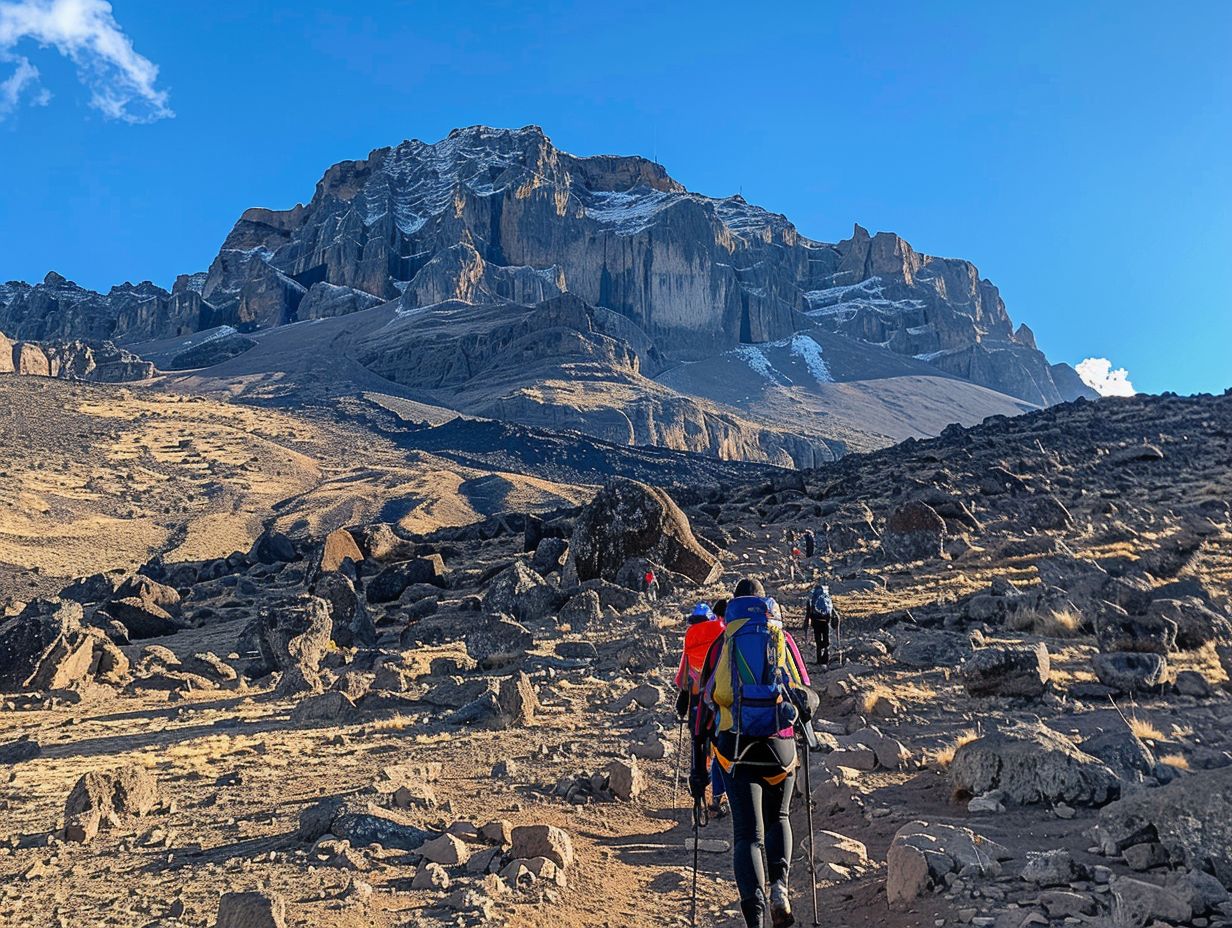
Climbing Kilimanjaro during different seasons requires varying strategies and preparations to navigate the unique challenges posed by the changing weather conditions, terrain, and environmental zones.
1. Peak Season Tips
During the peak season, climbers should consider utilizing success-oriented routes like the Lemosho Route, strategically timed Kosovo Camp stays, and planning climbs around full moon dates.
When choosing a route, consider the Machame Route, known for its stunning scenery and gradual acclimatization opportunities, while Barranco Camp can help with altitude adjustment.
Utilize moonlit nights to your advantage, by choosing well-maintained paths and enhancing your chances of spotting wildlife along the way.
Researching the phases of the moon before setting off can greatly assist in aligning your climb with these beneficial nights.
2. Shoulder Season Tips
Navigating Kilimanjaro during the shoulder season requires careful attention to glacier conditions, trail safety, and visibility challenges, particularly in April, November, and December.
One essential aspect to consider is the glacier safety precautions during these months, as the shifting temperatures can affect the stability of the ice formations.
Trail conditions may vary significantly during the shoulder season, with potential obstacles like loose rocks or slippery surfaces, demanding extra vigilance from climbers.
It is crucial to be prepared for limited visibility due to weather changes, especially when climbing towards higher altitudes where fog or mist can obscure the path.
3. Low Season Tips
Conquering Kilimanjaro in the low season of May demands preparedness for icy terrains, precipitation risks, challenging summiting conditions, and adapting to the unique climate.
When venturing on Kilimanjaro in May, climbers need to equip themselves with the right gear to navigate the icy terrains, crampons, ice axes, and insulated clothing are essential.
Being mindful of the potential rainfall and snow is crucial. Prepare waterproof layers and ensure that gear stays dry to prevent hypothermia.
Understanding the changing weather patterns and swiftly adjusting plans according to the conditions can significantly impact the success of the climb.
Acclimatization to the high altitudes becomes even more critical during the low season. Climbers must pace themselves, staying hydrated, and listening to their bodies.
Hiring a knowledgeable guide familiar with the low season challenges can provide invaluable insights and enhance safety measures.
With proper planning, equipment, and a cautious approach, conquering Kilimanjaro in May can be a rewarding and memorable experience.
Conclusion
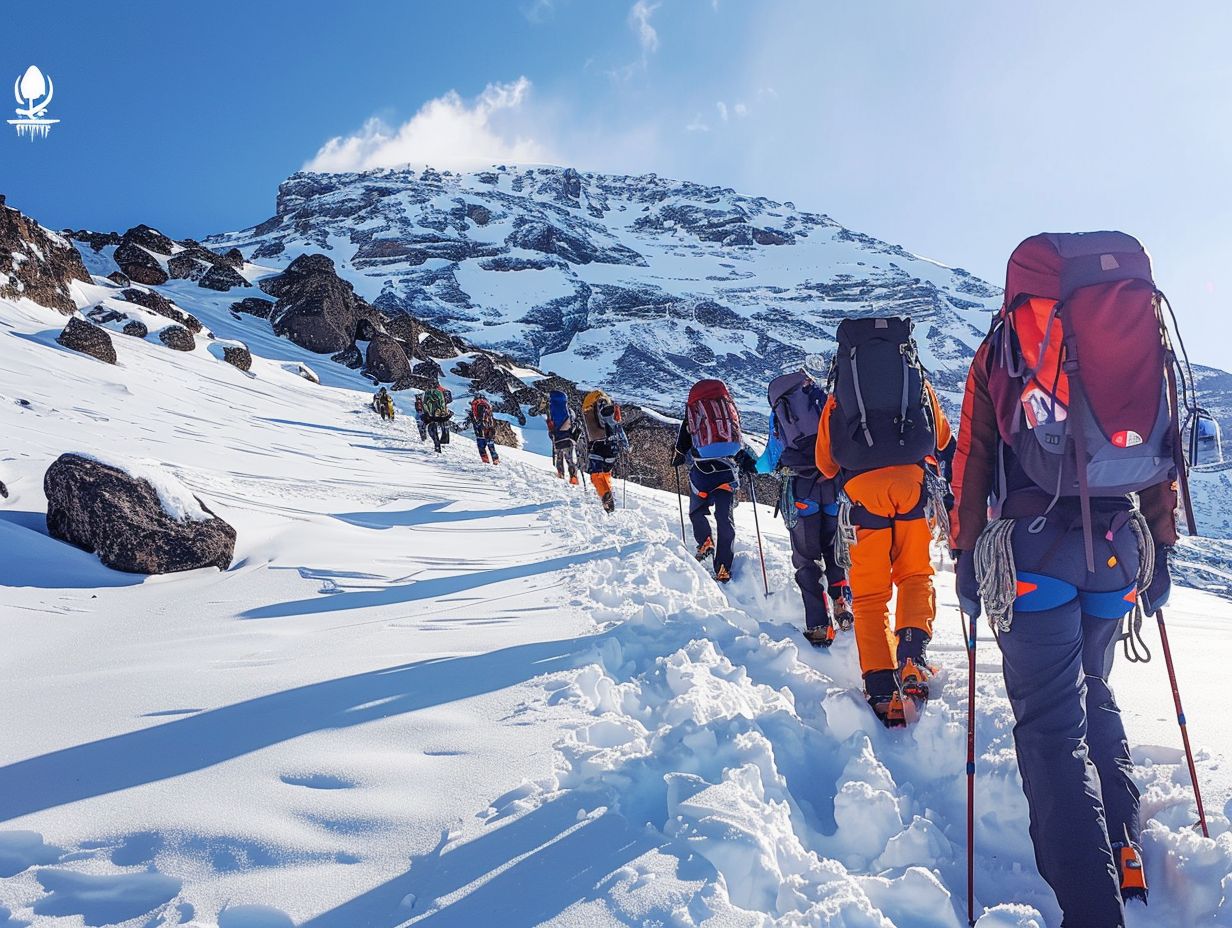
Selecting the optimal time is paramount to ensuring a safe and successful trek, taking into account factors such as group climb schedules, training readiness, and preferred hiking conditions.
When considering your Kilimanjaro climb, it’s essential to check the weather patterns to avoid extreme conditions, which could affect your ascent.
Planning ahead and booking in advance can also help secure your preferred climbing window. Understanding the peak seasons and shoulder seasons can aid in deciding the best time.
Whether you thrive in crowded or quieter trails, selecting the right time can significantly impact your overall experience.
Frequently Asked Questions
1. What is the best time to climb Kilimanjaro?
A: The best time to climb Kilimanjaro is during the dry season, which typically runs from late June to October. This is when the weather is most stable and there is less chance of rain and clouds obstructing the view.
2. What are the benefits of climbing Kilimanjaro during the dry season?
A: Climbing Kilimanjaro during the dry season offers several benefits, including better visibility, less chance of encountering slippery and muddy trails, and a higher success rate due to more favorable weather conditions.
3. Is it possible to climb Kilimanjaro during the wet season?
A: While it is possible to climb Kilimanjaro during the wet season, it is not recommended. The rainy season, which usually lasts from November to May, brings heavy rainfall and increased risk of landslides and slippery trails, making the climb more challenging and potentially dangerous.
4. What is the worst time to climb Kilimanjaro?
A: The worst time to climb Kilimanjaro is during the rainy season, which runs from November to May. The heavy rainfall and increased chances of cloudy and foggy conditions can make the climb difficult and dangerous.
5. Are there any other factors to consider when deciding on the best time to climb Kilimanjaro?
A: Yes, there are a few other factors to consider, such as crowds and cost. The dry season tends to be the most popular time to climb Kilimanjaro, so expect larger crowds and potentially higher prices for tours and accommodations. The shoulder seasons of January-February and September-October are often less crowded and can offer a good balance of favorable weather and lower costs.
6. Can you climb Kilimanjaro at any time of the year?
A: Technically, yes, you can climb Kilimanjaro at any time of the year. However, it is not recommended to climb during the rainy season due to safety concerns and lower chances of success. It is best to plan your climb during the dry season for the most enjoyable and successful experience.